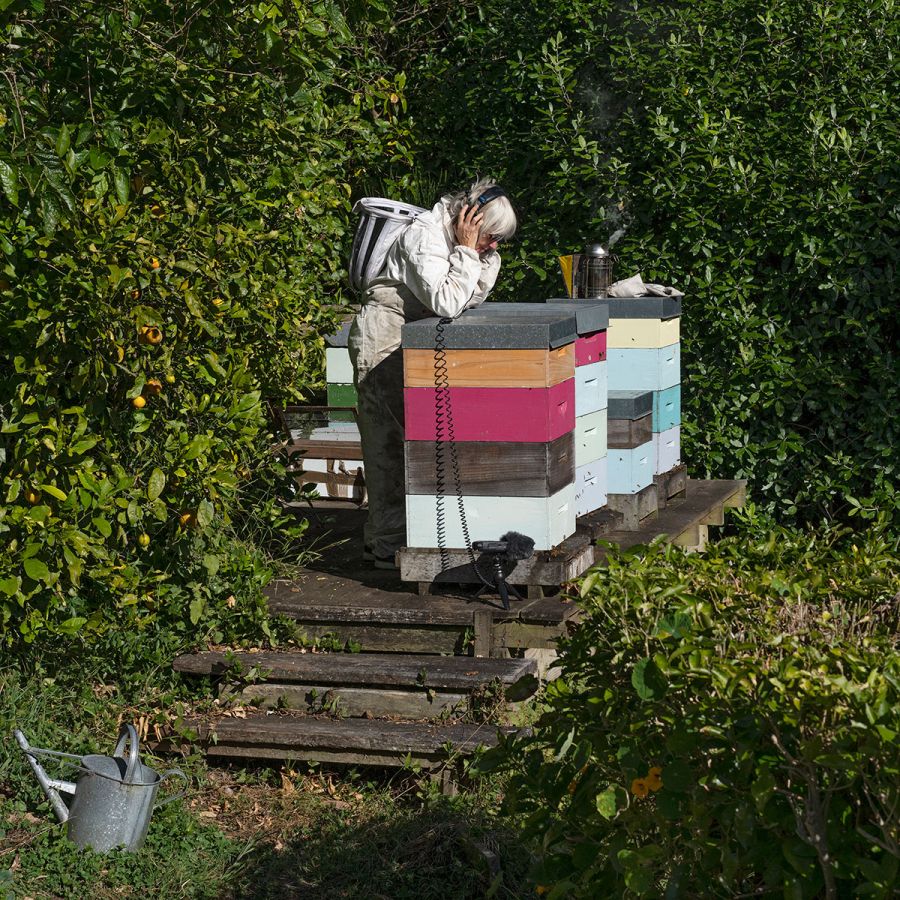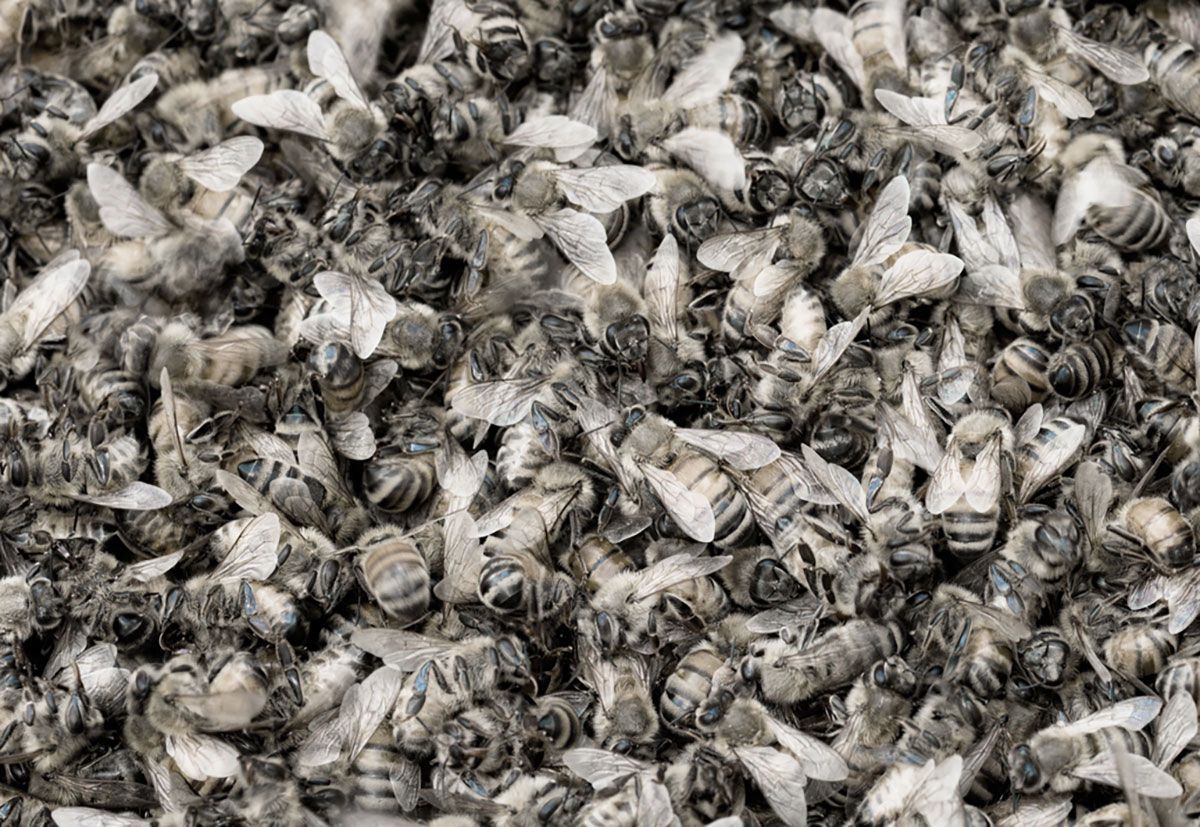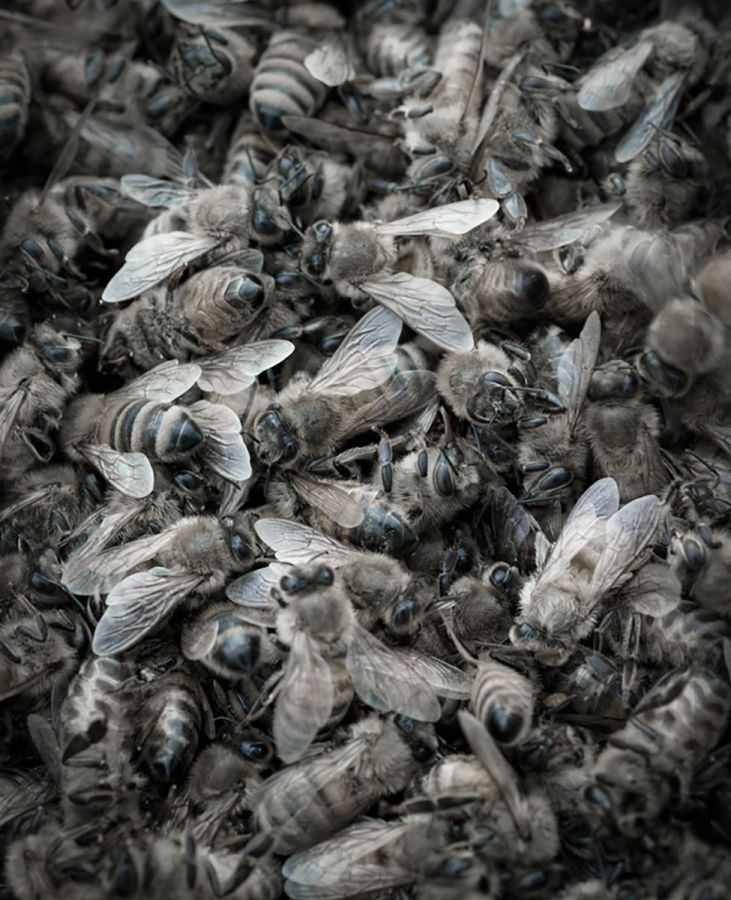Anne Noble with Guy Warman
10,000 Waking Bees is a glimpse inside a scientific investigation into the impact of anaesthetics on the circadian clock of honey bees. As an artist and a beekeeper, Anne Noble fell in love with chronobiologist Guy Warman’s studies of the time sense of bees. He found that general anaesthesia stops the circadian clock of honey bees so that their time orientation is out of synch when they navigate using the position of the sun in the sky. After six hours of anaesthesia their direction of flight back to the hive is that which they would have taken at the moment of being put to sleep, following the sun’s course six hours earlier.
This work explains that feeling of “just having being put to sleep” when waking up after a long operation and the studies have shown that this anaesthesia-induced jetlag can be reversed by bright light (in bees and in humans). Watching Warman put the whole colony of bees to sleep, Noble conjured an image of 10,000 waking bees – an event one would never normally see in a beehive. The stillness of a multitude of bees and their transition from the anaesthetic-induced sleep to wakefulness was what Noble was later privileged to see and to photograph. These images echo her experience of wonder at our biological closeness to bees as a species. The immersive scale of the photographs is a poetic gesture to bring the bees closer to us, both physically and metaphorically.


